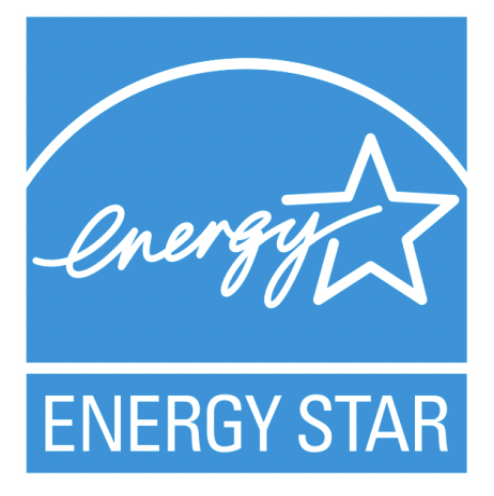ENERGY STAR Equipment and Plug Load
New ResidentialWhat is ENERGY STAR Equipment and Managing Plug Load Energy Use?
 ENERGY STAR, a joint program of the United States Environmental Protection Agency (US EPA) and the United States Department of Energy (US DOE), labels energy-efficient products and practices using third-party certified testing to guarantee quality and performance.[1]
ENERGY STAR, a joint program of the United States Environmental Protection Agency (US EPA) and the United States Department of Energy (US DOE), labels energy-efficient products and practices using third-party certified testing to guarantee quality and performance.[1]
On average, cooking and cleaning appliances account for 9%, computers, televisions and related equipment for 10%, and other uses or miscellaneous electronic loads (MELs) or plug loads accounting for 27% of energy use in residential buildings.[2] Plug load refers to any device plugged into the home’s electrical system including task lighting, televisions, kitchen appliances, and cell phone chargers.[3]
ENERGY STAR qualified home appliances utilize advanced technologies making them 10-50% more efficient than standard appliances.[4] Replacing conventional appliances and other electronic devices at the end of their useful life with ENERGY STAR labeled products and managing plug loads can save money through reduced energy consumption and associated cost savings.
How to Implement ENERGY STAR Equipment and Mange Plug Loads
- Select ENERGY STAR certified products for the home including electronics such as computers and televisions as well as home appliances, lighting fixtures, HVAC equipment,[5] and water heaters. For a complete list, see ENERGY STAR certified products.
- Check for available incentives and rebates.
- Follow the manufacturer’s instructions or hire a professional installer as poor installation can affect the performance of equipment.
- Manage plug loads. Eliminate or unplug unnecessary devices. Turn off or power down devices when not in use and use power management settings, timers, and advanced power plugs. Engage occupants and make sure they understand why, when, and how to power down.
Example
Acampora Residence, Barnegat, NJ
A new home built to the NJ ENERGY STAR Homes standards, the Acampora home utilizes ENERGY STAR qualified appliances and lighting. Combined with an energy-efficient HVAC system, higher R-value insulation, and high-performance windows, the home expects annual cost savings of $480 by reducing energy consumption by 1,500 kWh and 300 therms per year compared to a conventional home or similar size.
Benefits
By avoiding the need to generate electricity in the first place, energy-efficiency reduces emissions and air pollution related to producing energy including greenhouse gases, acidifying substances, ozone precursors, and particulate matter or precursors.[6] The installation of ENERGY STAR qualified equipment and managing plug loads in a residential building can reduce energy usage and lower energy and utility bills.[7]
- Extends product life and decreases maintenance
- Lower energy use and utility bills
- Increased resale value of an energy-efficient home
Costs
Annual energy and costs savings often justify additional upfront costs of selecting ENERGY STAR certified products over conventional products. Rebates and incentives also help reduce upfront costs.
Resiliency
Use of ENERGY STAR certified products and managing plug load reduces energy usage, increasing grid reliability and reducing utility costs.
References
[1] ENERGY STAR. http://www.energystar.gov/index.cfm?c=about.ab_index (accessed April 17, 2018).
[2] Lisa Schwartz et al. “Electricity end uses, energy-efficiency, and distributed energy resources baseline.” Energy Analysis and Environmental Impacts Division Lawrence Berkeley National Laboratory. January 2017. Page 24. https://www.energy.gov/sites/prod/files/2017/01/f34/Electricity%20End%20Uses,%20Energy%20Efficiency,%20and%20Distributed%20Energy%20Resources.pdf (accessed April 18, 2018).
[3] New Buildings Institute. 2012. “Plug Load Best Practices Guide: Managing Your Office Equipment Plug Load.” https://newbuildings.org/wp-content/uploads/2015/11/PlugLoadBestPracticesGuide1.pdf (accessed April 16, 2018).
[4] US EPA Energy Star Program. Certified Products. https://www.energystar.gov/products (accessed April 16, 2018).
[5] ENERGY STAR. ENERGY STAR Training Center. http://www.energystar.gov/index.cfm?c=pt_univ.pt_univ (accessed April 17, 2018).
[6] Lisa Schwartz et al. “Electricity end uses, energy-efficiency, and distributed energy resources baseline.” Energy Analysis and Environmental Impacts Division Lawrence Berkeley National Laboratory. January 2017. https://www.energy.gov/sites/prod/files/2017/01/f34/Electricity%20End%20Uses,%20Energy%20Efficiency,%20and%20Distributed%20Energy%20Resources.pdf (accessed April 18, 2018).
[7] ENERGY STAR. ENERGY STAR Qualified Appliances. https://www.energystar.gov/buildings/building_recognition/building_certification/reasons_get_certified (accessed April 17, 2018).
